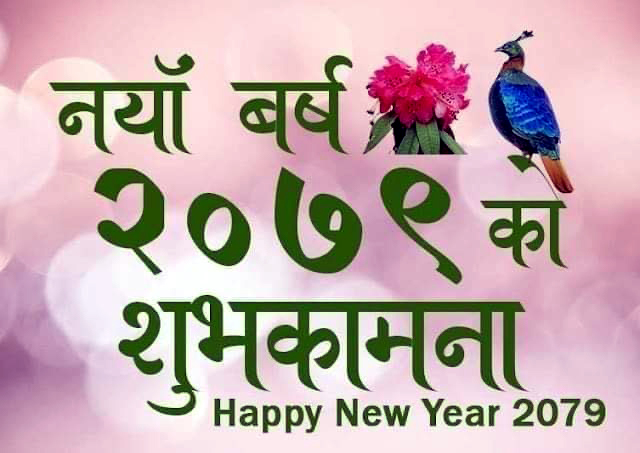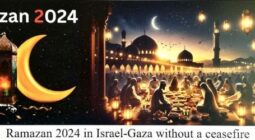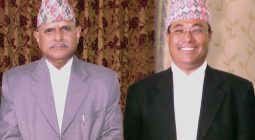So far Two Thousand and Seventy-Eight Years of Bikram Sambat has passed and we have entered into 2079 Bikram Sambat from TODAY-Thursday April 14, 2022.
The New Year festival is celebrated at the beginning of the new year. People in many parts of Asia, as well as elsewhere in the world, love to celebrate a holiday marking the start of a new year – a festival of putting aside the problems and disappointments of the past, of finding new hope, of beginning anew.
The New Year gives us inspiration to start new work with newer resolutions and also by reaffirming good intentions on our march towards development and prosperity.
Among the many festivals, the first day of Baisakha is also important not only because of the New Year’s Day but also has its own value from the cultural viewpoint.
New Year means a refreshing and rejoicing mood! This day gives inspiration to all to start work anew with newer resolutions and also by reaffirming good intentions on our march towards development and prosperity.
The Nepalese Year falls in mid-April. In Nepal the Bikram-Sambat calendar is observed.
Nepalese people hope that the New Year will bring joy and happiness to their lives.
To mark the New Year, many Nepalese go out and gather together to eat festive meals and enjoy each other’s company. The New Year is celebrated rejoicing or quietly but however will be observed colourfully.
It is also important to look back with nostalgia and with pride at the achievements of the past successes and failures, happiness and sadness and relieving the memories of those who are no more with us but also to plan further action on the basis of these.
However, the Bikram Sambat was not used in our early or medieval period. But whatever in the history retained, Bikramaditya has been credited for his contribution to start Bikram Sambat.
The first day of the bright lunar fortnight that falls on every Baisakh is observed as the New Year’s Day. Mes means Aries (Ram).
In Sanskrit, it means the first day of the month. Mes Sankranti, therefore, means the day when the Sun enters Aries in the Zodiac system.
On this day the Nepali people exchange greetings wishing each other a Happy New Year. On this day religious-minded Kathmanduties go to Tokha, six miles north of Kathmandu, to take bath in a stream known as “Swapna Teertha”- Stream of a Dream. It believed that taking bath in that particular stream may cure all kinds of diseases.
On the same day in Bhaktapur, the New Year coincides with Bisket Jatra, one of the most exciting of all major festivals of the Valley.
As New Year heralds’ new beginnings and brings faith in and promise to life, it is also known as a Harbinger of Hope.
Thus, people visit different shrines to start a new life from that day and vow not to repeat their bad karma.
Not only Nepal is observing the New Year today, but also Bangladesh, Cambodia, India, Indonesia, Laos, Myanmar, Pakistan, Thailand, Sri Lanka are observing and entering towards their New Year Day from today.
Thais, Laotian, splash water on one another. The Thai new year, Songkran -a festival of purification, and its main feature is water-splashing.
Chinese New Year is observed between late January and mid-February, approximately at the beginning of Spring. It is celebrated not only in China, but also in Korea, Vietnam (where it is known as Tet).
The Chinese eat long-life foods. The Balinese observe a day of silence. Some people celebrate the traditional new year as well as the modern one; others have simply transposed the old customs to the new holiday.
Japan also celebrated the lunar new year (Setsubun) in the old day. But since the adoption of the Western calendar in Japan in 1873 the official New Year’s Day has been January 1.
During the New Year, the Japanese scatter dried beans to drive evil from the house. Throughout Japan on New Year’s Eve, the bells of Buddhist temples are rung 108 times (for the number of beads on a Buddhist rosary); television stations broadcast the bell-ringing from temples with particularly large or famous bells, and many people watch the ceremony on TV.
If the Japanese celebrate the new year with bells, the Balinese celebrate it in silence. Most people on the Indonesian island of Bali follow an ancient form of Hinduism, brought from India centuries ago; and their new year, Nyepi, is based on a Hindu soli-lunar calendar. Nyepi is defined as the day after the new moon closest to the spring equinox.
Except for the Hindu Balinese, most Indonesians are Muslims, and many of them celebrate the new year on 1 Muharram, the first day of the first month of the Muslim calendar.
At present modern traditions of celebrating the New-year have been imported from the West.
So, besides, gather in on place people go for outdoor activities too to celebrate the New Year.
Looking through the history of the New Year, the tradition of celebration has varied and many new ways have been added too. This day is notable not only as New Year’s Day but also as a day of festivity and of religious sanctity.
It is said that every New Year is traditionally the right moment to take stock. And so, there is an optimistic tint for the whole year to be colourful as idyllic as the country’s picturesque scenery.
This would seem to be almost the opposite moment now to look at where we stand today. Let’s hope the New Year 2079 that is to begin TODAY will bring peace, prosperity and good health to all the Nepalese.
A Very Happy & Prosperous New Year.









